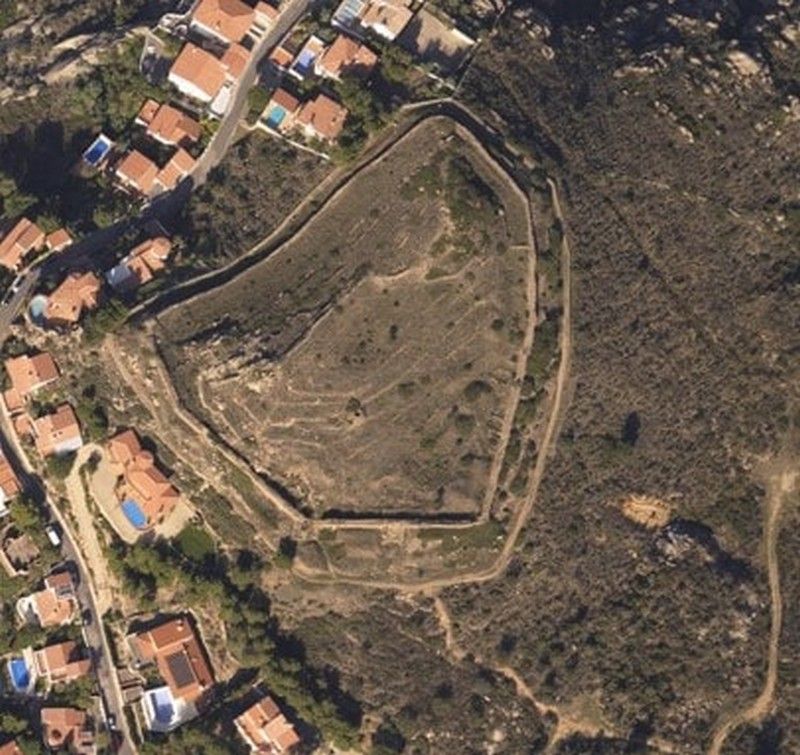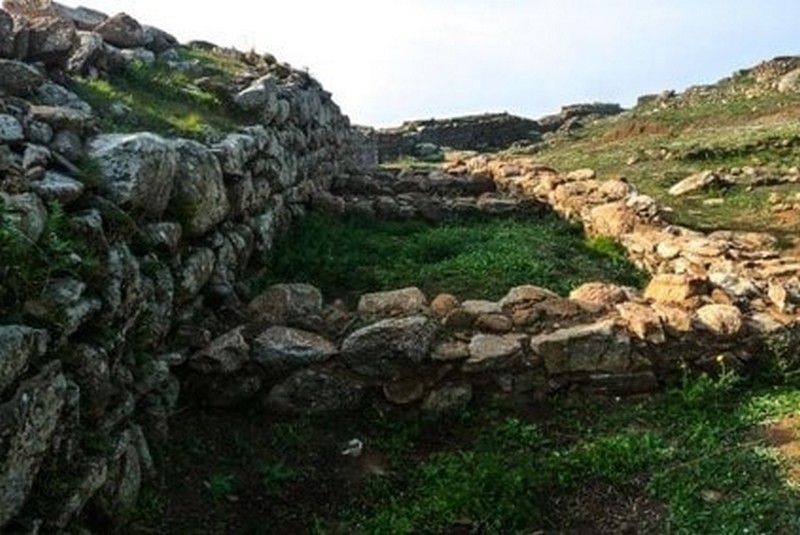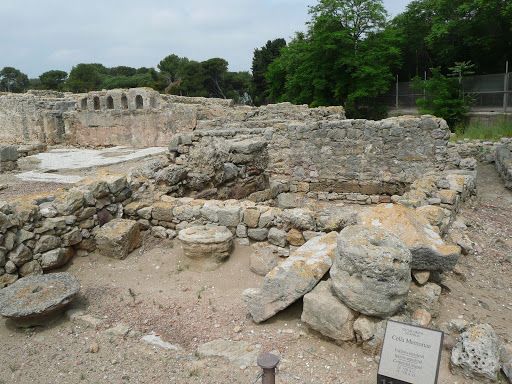ASENTAMIENTO FORTIFICADO DE PUIG ROM
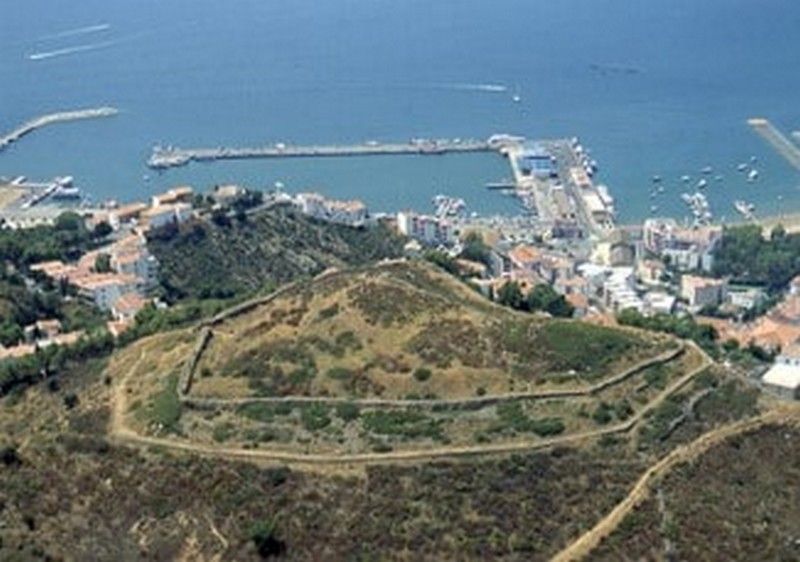
Historic environment
At the top of a small peak near the sea called Puig de les Muralles are located the remains 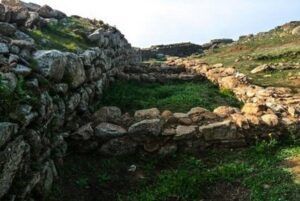 archaeological remains of an ancient fortified settlement that, due to its characteristics, has traditionally been identified as a structure of a military character –castrum–, although it has also been interpreted as a civil settlement in height. The chronology attributed is from the 7th century, and so far no later chrono-typological element has been identified, so it is very likely that the place was abandoned after the Muslim occupation at the beginning of the 8th century (the latest element is a Agila II tremis). It has been tried to relate this fortified enclosure as one of the military agents of the rebellion of Doge Paul against King Wamba (a. 672); in fact, the site constitutes a paradigm among the settlements of Visigothic chronology in the northeast of the peninsula.
archaeological remains of an ancient fortified settlement that, due to its characteristics, has traditionally been identified as a structure of a military character –castrum–, although it has also been interpreted as a civil settlement in height. The chronology attributed is from the 7th century, and so far no later chrono-typological element has been identified, so it is very likely that the place was abandoned after the Muslim occupation at the beginning of the 8th century (the latest element is a Agila II tremis). It has been tried to relate this fortified enclosure as one of the military agents of the rebellion of Doge Paul against King Wamba (a. 672); in fact, the site constitutes a paradigm among the settlements of Visigothic chronology in the northeast of the peninsula.
The site aroused early interest among local cultural elites and excavations began in small irregular campaigns. The first of these was carried out by the Board of Museums of the Mancomunitat de Catalunya (1917-18); the second (1946-47) was in charge of Professor Palol; the third by Palol and Tuset (1982). The current excavation and research campaigns have been carried out by Subias, Puig, Codina and Fiz since 2014.
Description
The deposit is strategically located in a pre-eminent point and with wide terrestrial and maritime visibility. The orography of the hill means that the fortified enclosure can only be accessed from the south and not without difficulty. The perimeter of the wall (2 meters wide) is preserved in its entirety in plan, with more or less degradation. Its solid construction is based on a double raised face with large blocks of poorly cut granite, the interior of which was filled with boulders. The enclosure was accessed through a 3.5 meter opening open at noon and flanked by two square exterior towers. 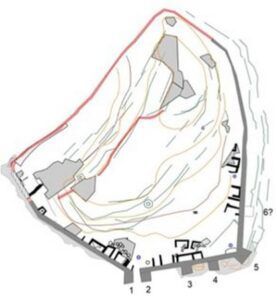 A third tower on the south canvas completes the defensive set.
A third tower on the south canvas completes the defensive set.
Within an enclosure that measures 90+80 meters in total, the preserved room structures are attached to the interior of the wall and remain partially visible. There has also been a significant density of silos distributed throughout the deposit.
During the excavations in the interior structures of the fortified perimeter, it has been revealed that the amount of recovered archaeological material (ceramic, bronze and iron) corresponds to agricultural and fishing tools (net leads and hooks), as opposed to the scarce material of an identified military character, consisting of a pointed tetrahedron to face the cavalry. It also highlights the quantity and variety of objects for personal use (belt buckles) and ornamental (Late Christian skylights, liturgical jug). The presence of other objects such as circular mills or wool carders reinforce the idea of an agricultural and livestock economy, regardless of the possible military function and also fiscal / administrative / storage and the place, since a Byzantine weight has been found and the aforementioned concentration of silos.
Jordina Sales Carbonell para URBS REGIA
Other interesting information
Visiting hours:: Visita libre
Bibliography
-Palol i Salellas, P. de, 1999: “Castre de Puig Rom”, en Del Romà al Romànic. Història, art i cultura de la Tarraconense mediterrània entre els segles IV i X, Enciclopèdia Catalana, Barcelona, 158-159.
-Palol i Salellas, P. de, 2004: El castrum del Puig de les Muralles de Puig Rom (Roses, Alt Empordà), Museu d’Arqueologia de Catalunya – Girona.
-Subias Pascual, E.; Puig Griessenberger, A.M.; Codina Reina, D.; Fiz Fernández, J.I., 2016: “El castrum visigòtic de Puig Rom revisitat”, Annals de l’Institut d’Estudis Empordanesos 47, p. 75-96.
-Subias Pascual, E.; Puig Griessenberger, A.M.; Codina Reina, D.; Fiz Fernández, J.I, 2020: “Nuevos datos sobre la muralla de Puig Rom (Roses, Alt Empordà, Girona)”, en Recintos fortificados en época visigoda: Historia, arquitectura y técnica constructiva, Dir.: J. M. Macias, A. Ribera, M. Rosselló, Ed. Institut Català d’Arqueologia Clàssica, Tarragona, 35-44.
Portals
rosespedia.cat
invarque.cultura.gencat.cat
enciclopedia.cat
tribunadarqueologia.blog.gencat.cat
naturalocal.net
recercat.cat
macgirona.cat






